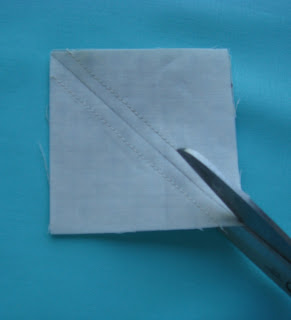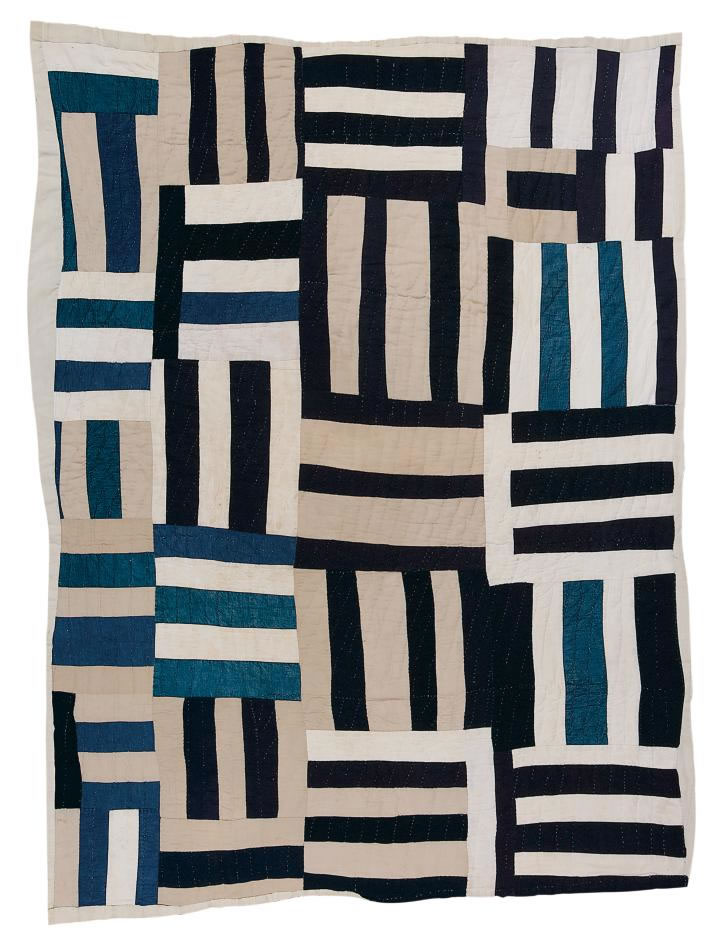This is an easy block that looks hard. Remember to press as you go and plan ahead which way you will press the seams so they alternate. Have fun. And.... send us some photos of your creations!
A - Cut 1 - 1 1/2” x 12’ background fabric
B - Cut 1 - 1 1/2” x 12”
C - Cut 1 - 2 1/2” x 2 1/2”
D - Cut 2 - 2 7/8” x 2 7/8”
E - Cut 2 - 2 7/8” x 2 7/8” background fabric
Pair Strip A and Stirp B right sides together.
Sew along the longest edge.
Press seam towards darkest fabric (B).
Line up sides on mat and cut end so square.
Cut AB strip into 2 1/2” x 2 1/2” pieces.
Take the two “E” squares.
Place them wrong side up on cutting mat.
Draw 1 line diagonally from corner to corner.
The cutting board helps to hold the fabric still.
Pair D and E right sides together. (2 sets)
Stitch 1/4” on either side of the pencil line.
Cut on the pencil line.
Open and press to darker fabric.
Clip “dog ears.”
You now have 4 triangle squares.
Lay out all pieces to form the block.
Stitch into 3 strips and press as shown.
Seam direction should alternate.
The pieces lock to form perfect intersec.tions.
Stitch strips together.
Press.
Done!
Your finished block should measure 6 1/2 inches square.




















































